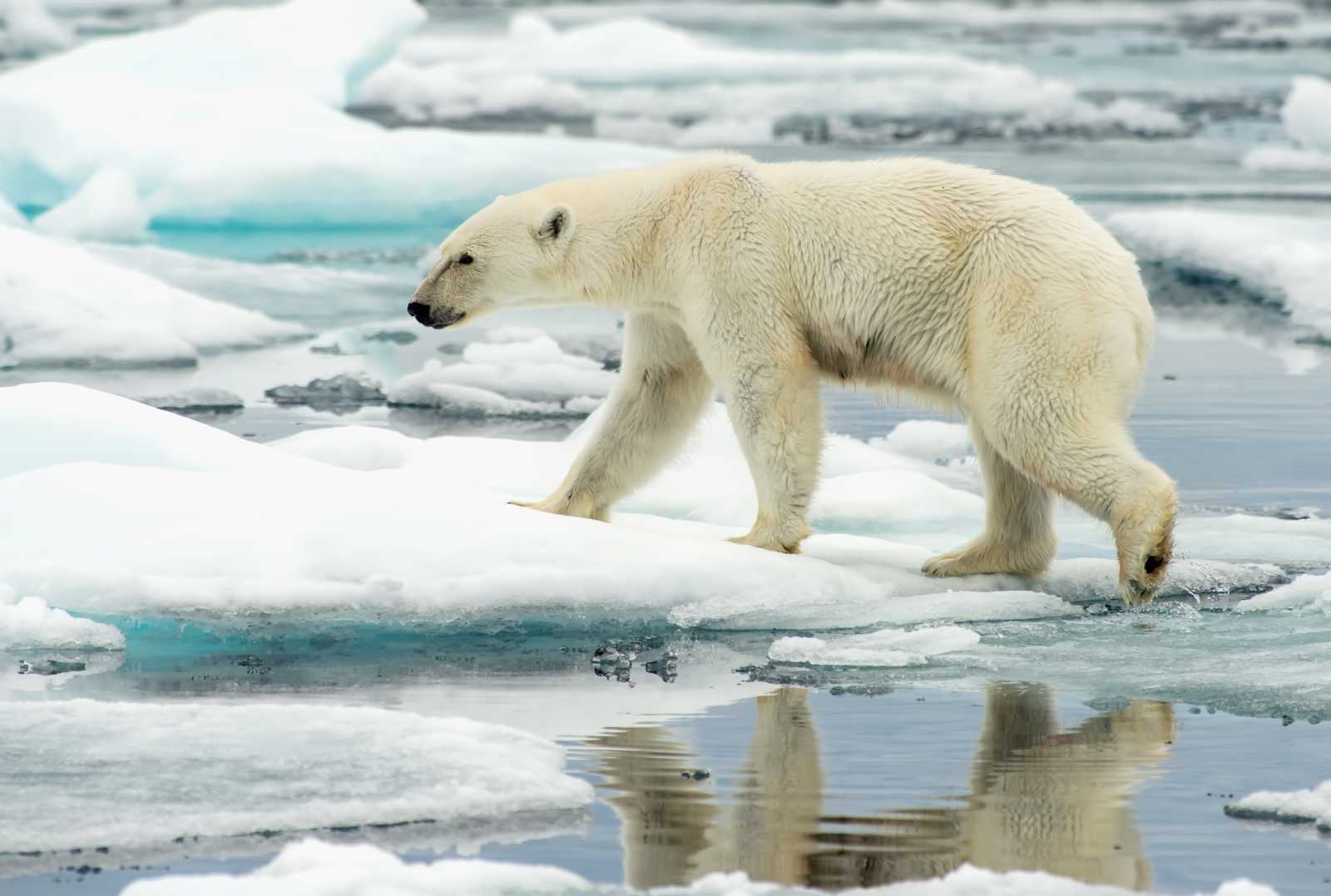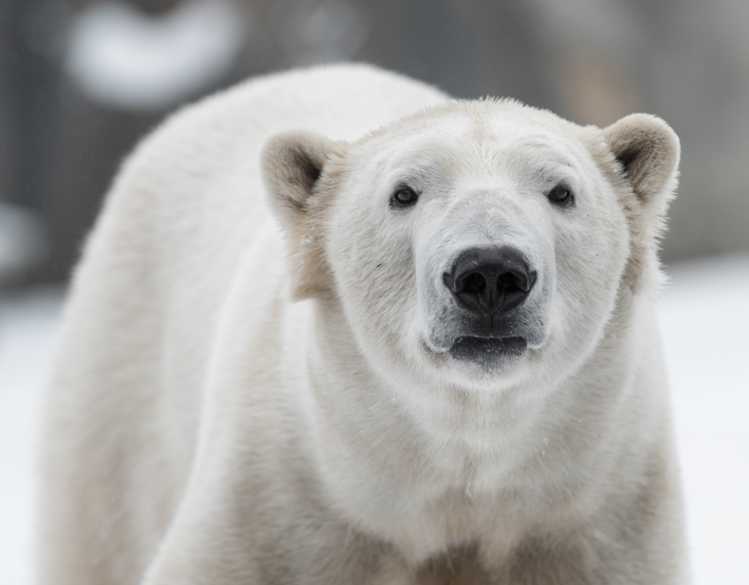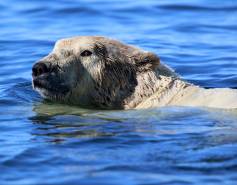
Polar Bear
Ursus maritimus
Learn More About Polar Bears
Polar bears are the largest bear in the world. They can grow up to 9 feet long, with males weighing between 800 to 1,300 pounds and females weighing between 300 to 700 pounds.
Their Latin name means “sea bear” – a fitting name as they spend most of their time on sea ice in the Arctic. To protect themselves from this chilly climate, polar bears have a thick fur coat and a substantial layer of fat.
A polar bear’s white coat serves as camouflage against their habitat of snow and ice, but it might come as a surprise to learn that they have black skin. This helps polar bears soak in as much heat as possible from the sun’s rays.

The greatest threats to marine mammals are caused by people, but we can also be their greatest champions.
Sign up for email from The Marine Mammal Center to stay updated on how you can be an advocate and champion for marine mammals like polar bears.
Habitat & Population Status

Polar bears live in Arctic regions like Canada, Alaska, Russia, Greenland and Norway. Much of a polar bear’s time is spent on sea ice, where they hunt, rest, breed and care for their young.
As the Arctic’s top predator, polar bears’ biggest threats are humans and impacts of climate change. It’s estimated that there are between 20,000 to 25,000 polar bears in the wild, but their numbers are expected to decline as their main habitat, sea ice, diminishes due to climate change.
To better protect this species, polar bears were listed as threatened in 2008.
Learn More About Animals of the Arctic and How They Are Impacted by Climate Change
{"image":"\/Animals\/Wild\/Other species\/cropped-images\/polar-bear-swimming-shutterstock-814-10-4657-3638-1610143651.jpg","alt":"polar bear swimming","title":"Marine Mammal Monday: Animals of the Arctic","link_url":"https:\/\/www.marinemammalcenter.org\/publications\/marine-mammal-monday-animals-of-the-arctic","label":"Online Learning Resource","type":"publication"}

Breeding & Behavior
Male polar bears reach sexual maturity between 6 to 10 years old and females between 4 and 6 years old, and once they reach this age, they give birth every two to four years.
In the fall, a pregnant female will dig deep into the snow to build a protective den. Once she gives birth in the winter, she and her newborn cubs (typically born two at a time) will stay in the den nursing until spring.
Newborn polar bears are around 12 to 14 inches long and weigh just 1 pound. Cubs nurse with their mother for about two years and remain with her until they reach sexual maturity.
Polar bears spend much of their time hunting, primarily eating ringed and bearded seals as they need a high-fat diet to survive. In fact, polar bears travel long distances, mainly by floating on ice chunks, in search of their primary food source.
Polar bears are generally solitary animals, yet they have been observed to be social too.





















